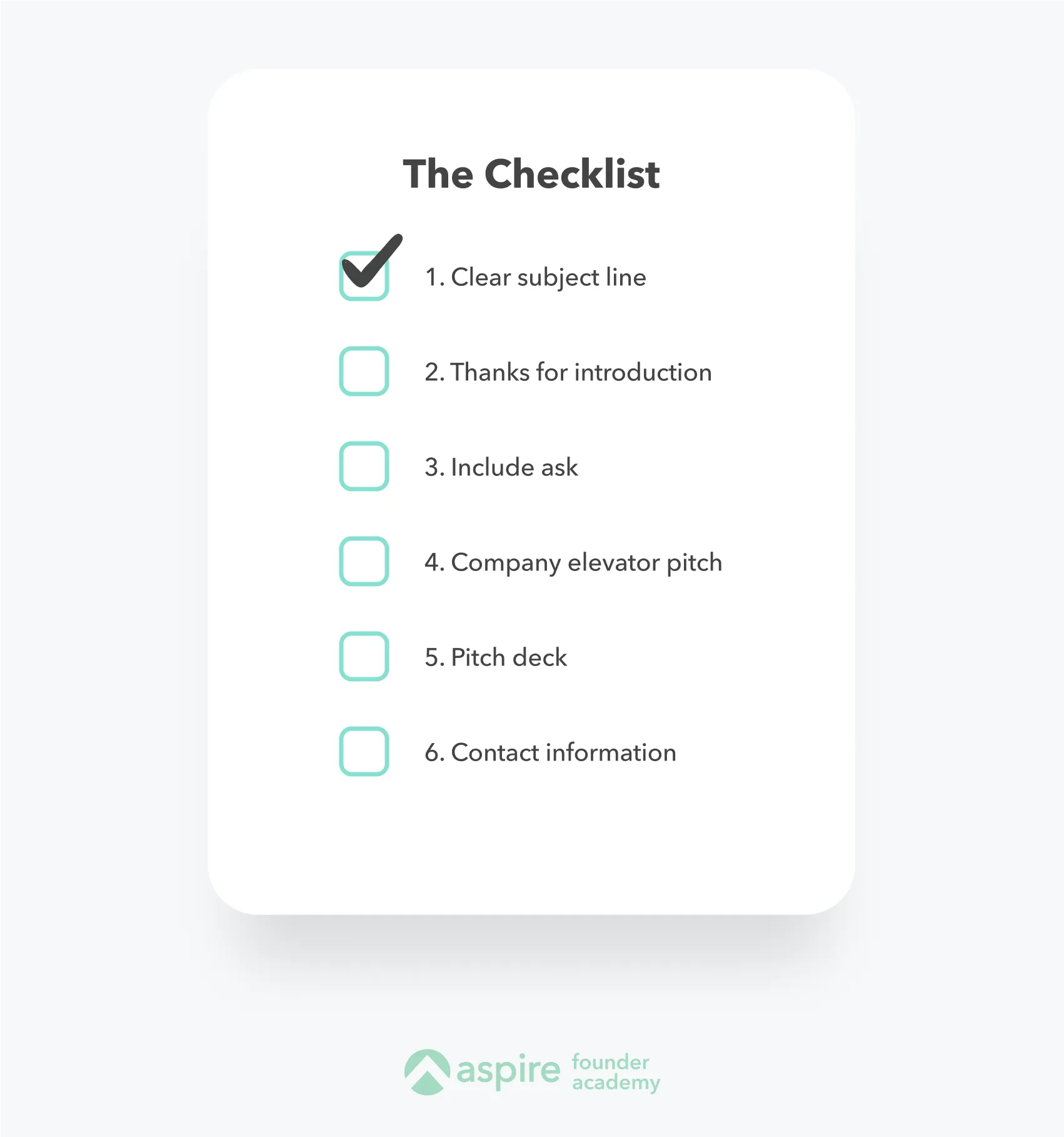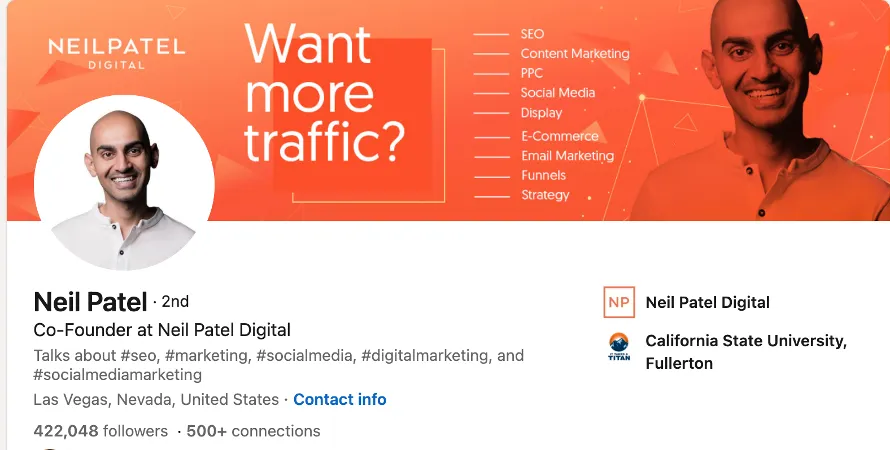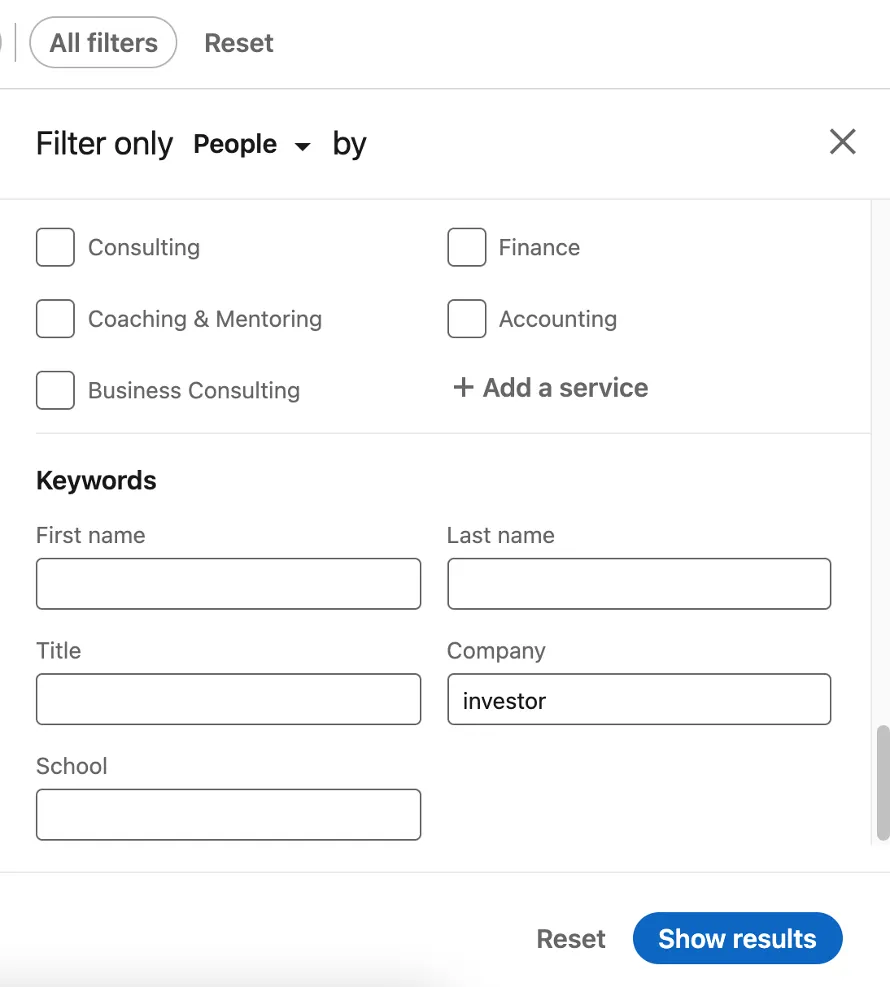Summary
Are you wondering how to find investors for your business?
You’ve already reached out to friends and family, but they couldn’t help. Or even better, your start-up has grown so much you need bigger funding.
Here are seven popular ideas to find investors for your small business.
- Warm introductions
- Start-up events
- Cold emails
- Start-up incubators
- Social media
- Blogging
- Crowdfunding
1. Warm introductions from your network
Let’s start with the most effective way to get small business investors: Warm introductions.
A warm introduction is when you have an existing relationship with an investor or when someone with a current relationship makes an introduction for you.
As a founder, you probably know fellow entrepreneurs who know investors. So reach out to your network and ask around.
Why are warm introductions essential?
Warm introductions make a significant difference in your chances of getting funding. They act as an endorsement of your character and value, depending on the person making the warm introduction, of course.
Potential business investors are more interested if they hear from someone they already have a solid relationship with. Data from VentuRank shows companies with a friendly introduction to a VC had a 26% chance of getting to an investment committee and a 4.6% chance of getting funding.
Companies without a warm intro only had a 1.19% chance of getting to an investment committee and a 0.38% chance of receiving funding.

How to ask for a warm introduction from your network?
If you’ve found someone who can introduce you, help them along by crafting an introduction email for them to forward to your person of interest. It helps your reference provide context and convey their excitement about meeting you.
Include these six elements in your email
1. Start with a clear subject line. For example, “Introducing (Company Name) and (an attention-grabbing hook).”
2. Thank the person for introducing you and specify which partner you’d like to connect with.
3. Include your ask: Usually a quick call or a meeting.
4. Add your company elevator pitch.
5. Attach your pitch deck.
6. Provide contact information.

2. Start-up conferences and industry events
If you have no connections, go to an industry event or a start-up conference. Virtual events have exploded in popularity in response to the pandemic, making it easier to find start-up investors without the need to travel.
Start-up founders and angel investors frequent these events. Find which companies your target investor has invested in and speak to their founders. They’re often easier to access and can refer you to that investor.
Even if you don’t meet a suitable investor at a networking event, someone you meet may know an investor and introduce you to them. This new relationship could lead to a warm introduction if things go well.
Where to find start-up conferences and networking events to attend
- Local start-up communities often host events for entrepreneurs and small business owners. For example, BLOCK71 in Singapore and Start-up Grind in Kuala Lumpur, Malaysia.
- Check out co-working spaces like Found8 and WeWork. They attract active entrepreneurs and host start-up events for the community.
- Look up industry conferences featuring other start-ups.
- Attend pitch competitions and pitch nights.
- Browse event discovery platforms like Eventbrite or Crunchbase.
3. Cold emails
Warm introductions are the best way to get in touch with investors, but if there’s no way to get one, you can still try cold emailing.
Even though the success rate with cold emails is a lot lower, you might still stand a chance if you follow these best practices.

How to write effective cold emails to investors?
Do
Keep it short: Your email should take no more than 60 seconds to read. Break up any walls of text into easy-to-read bullet points.
Include specific numbers where possible: Exact numbers and metrics are more convincing than buzzwords like skyrocketing growth.
Have a clear subject line: Be clear about what you offer. You may add some intrigue, but VCs won’t open clickbait emails.
Describe what your company does and show traction: Talk about your solution, the problem you’re solving, competitive advantage, information on your team growth and traction. Investors will be more excited to meet with you if you can showcase your business wins and milestones.
Personalise it: Make sure your investor covers your company’s industry. And include a few words about why you want to work with them.
End with one brief closing sentence with a clear ask: Decide if you’re asking an investor for their advice, an investment or a referral and tailor your ask accordingly. It should be something an investor could reply to in one sentence.
Attach your company profile and pitch deck to the email: If there’s interest, investors will want to know more. Be one step ahead and add your pitch deck as well as any other related information.
Don’t
Immediately ask for an in-person meeting: Focus on sparking the investor’s interest, so they want more information from you. Make a connection before you ask more of their time.
Send multiple follow-up emails: Maybe, they forgot to reply. But be reasonable. Wait a few days between emails, and don’t send more than three or four. Instead, use tracked opens to gauge their interest.
Overuse business jargon and acronyms: Don’t show how smart you are by using complex words. Show your intelligence by explaining your business in simple terms.
Read more: Toba Capital’s helpful tips on structure and mistakes to avoid in your cold email here.
4. Enrol in a start-up incubator
Start-up incubators come with nearly everything an early start-up needs, including access to potential seed-round investors. They invest as a company and are more likely to offer reasonable investment terms to start-ups.
This isn’t the only benefit of incubators, though. They typically come with a structured programme to guide you through the process.
Additionally, incubator programmes organise demo day events or pitch nights. These are great opportunities for start-ups to pitch to a crowd of investors, expose their company and build their network.
Furthermore, endorsement by a well-known start-up boot camp provides credibility to support future conversations with investors.
Where to find start-up incubator programmes
- Explore NUS Enterprise’s list of start-up incubators in Singapore.
- Go through Crunchbase’s list of Southeast Asian incubators.
- Refer to Founder Institute’s list of accelerators, incubators and investors for Singapore-based start-ups.
5. Social networks
If none of the above work for you, or you’re eager to start right now, social media is a great place to search for small business investors.
Start with these three popular platforms.

1. LinkedIn: The most used social media platform for institutional investors. More than 50% of investors use LinkedIn for professional or financial purposes.
2. Crunchbase: Use Crunchbase to find active business investors who invest in companies like yours. You can also track business competition and benchmark your company metrics.
3. Twitter: Use curated lists and topics of interest to find investors. Twitter also has an advanced search tool.
How to effectively use social media platforms to find investors for your business?
The tips below apply to all social media platforms, but we'll use LinkedIn as an example.
Step 1: Optimise your profile
Your profile is the first impression for any potential business investor. Upload a good profile photo and a header image that briefly describes your company. You should also add an updated company profile and highlight key business accomplishments. Finally, it’s worth mentioning you’re looking for funding.

Step 2: Use keywords to search for business investors via LinkedIn Search
In the Company field, type in “Capital,” “Venture,” “Holdings” or “Investors.” Most venture capital firms use these keywords in their professional title, and private investors use the term “Angel Investor” or “Investor.”
Narrow down potential investors by target industry, stage and location. Investment funds typically specify whether they invest in seed stages or Series A and beyond.

Step 3: Connect first without pitching
When you’ve found potential investors for your company, reach out to make an initial connection. Avoid pitching your company at this stage, as it’s a sure way to get your connection request ignored and blocked. Instead, work towards building a relationship.
- Follow their company page.
- Read their social media posts or blog content.
- Look at what they’ve invested in and what they’re interested in.
Then, send them a personalised InMail message.
- Explain why you want to connect.
- Describe how connecting will benefit them.
- If available, mention something you have in common or where you’ve met before.
Many business investors don’t just accept anyone as a connection, so send an InMail over a connection request. If the investor is part of a mutual interest group or shares a contact with you, try asking them to introduce you instead.
Step 4: Build relationships
If there’s a positive response, keep building the relationship. Comment thoughtfully on what the investors share and stay in touch until the time has come to introduce your company properly and announce that you’ll be raising funds.
Read more: More tips on how to approach an investor on LinkedIn from VC investor Anand Daniel
6. Document your start-up journey on a blog
If you can write well, why not document your start-up’s journey on a blog?
Writing on the Internet is one of the most substantial passive assets you have to strengthen your personal and company profile. As such, it’s a great way to attract attention from potential investors.
By openly sharing your start-up’s story, writing about the industry and the problem your start-up solves, investors get a glimpse into how you work and think. Thoughtfully written pieces may even be conversation-starters.
If you don’t have your blogging domain, Medium and LinkedIn are free writing platforms that put you in front of a targeted investor audience.
Five examples of start-up founders who blog
1. Nathan Barry, founder of ConvertKit
2. Aytekin Tank, founder of JotForm
3. Nick McCreath and Alex Turnbull, co-founders of Groove
4. Kate Kendall, founder of CloudPeeps
5. Danielle Morrill, founder of Referly
Tip: Investors write on LinkedIn or their blog too. Leave thoughtful comments and engage with their posts on social media. This can help you get noticed and provide a lead-in to start building a relationship with these investors.
7. Crowdfunding platforms
There are many ways of funding a start-up. If you’re a consumer-facing product business, consider public crowdfunding platforms to find investors for your small business.
Crowdfunding campaigns are great to find investors if:
- You have a physical product prototype.
- You're prepared and ready to spend time and effort marketing and actively speaking to backers on different crowdfunding campaigns.
- You have a solid social media presence and video pitch to help create a successful crowdfunding campaign.
Where to start a crowdfunding campaign for your consumer-facing product?
Have a look at crowdfunding sites like Kickstarter and Indiegogo.
If you’re not a consumer-facing business but still want to consider crowdfunding platforms, have a look at these platforms that help match start-ups and small businesses with investors.
- Funding Societies: The largest and most well-funded platform that facilitates peer-to-peer (P2P) lending for small businesses in Southeast Asia.
- FundedHere: If you’ve incorporated your start-up in Singapore, FundedHere is another crowdfunding option to consider. You can choose to get funded using the equity or loan model.
- Fundnel: Crowdfunding platform for more mature companies.
Some successful consumer businesses that began with crowdfunding
- Oculus VR: Raised over 2.4 million USD from 9,500 backers in 2012. The company was later acquired by Meta (formerly known as Facebook). They succeeded because of their clear product tagline, impressive prototype and fantastic backer rewards.
- Exploding Kittens: Raised 8.8 million USD from a few hundred thousand backers. All three people behind Exploding Kittens have considerable followings and came forward when analogue and low-tech games were making a comeback.
Finding the right investors for your start-up takes time
While there are many investors, finding the perfect match is going to take time. Many investors won’t be prepared to invest in your start-up, and others might not be the type of people you want to work with.
Therefore, you need a list of at least 60 investors before you start reaching out. In Aspire’s investor database you can find a comprehensive list of start-up investors in Southeast Asia.

.png)








%201.webp)


.webp)